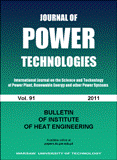Utilization of Livestock Waste Biomass in Off-Grid Energy Systems: A Roadmap for Decision Makers and Investors in the Renewable Energies Sector in Iran
Abstract
Iran possesses strong animal biomass resources, which are readily accessible and can contribute to local energy production, reduce dependence on fossil fuels, create local jobs, and enhance economic sustainability. Given Iran's diverse climates and the availability of different renewable energy sources in each climate, a knowledge gap exists regarding the potential for renewable electricity generation based on biomass in each region. Therefore, this study evaluates the energy, economic, and environmental performance of a wind-solar-biomass hybrid system supported by batteries in eight different climate zones of Iran. Key questions addressed include: What is the optimal system configuration for each climate? What is the levelized cost of electricity (LCOE) for the optimal system in each climate? And which climate is the most suitable? These considerations highlight the necessity of this work. Simulations were conducted using HOMER V2.81 software. The results indicate that the Jask station, located in a very hot and humid climate, has the lowest electricity production cost at $0.615 per kWh. To meet a daily electricity demand of 1488 kWh with a peak load of 168 kW, 226,270 different configurations were analyzed. The system, consisting of 550 kW solar panels, a 500 kW biomass generator, a 150 kW converter, and 500 batteries, was selected as the economically optimal configuration.
Published
2025-03-16
How to Cite
KESHAVARZI, Razieh; JAHANGIRI, Mehdi.
Utilization of Livestock Waste Biomass in Off-Grid Energy Systems: A Roadmap for Decision Makers and Investors in the Renewable Energies Sector in Iran.
Journal of Power Technologies, [S.l.], v. 105, n. 1, p. 30 -- 45, mar. 2025.
ISSN 2083-4195.
Available at: <https://papers.itc.pw.edu.pl/index.php/JPT/article/view/1885>. Date accessed: 13 june 2025.
Issue
Section
Renewable and Sustainable Energy
Authors who publish with this journal agree to the following terms:
- Authors retain copyright and grant the journal right of first publication with the work simultaneously licensed under a Creative Commons Attribution License that allows others to share the work with an acknowledgement of the work's authorship and initial publication in this journal.
- Authors are able to enter into separate, additional contractual arrangements for the non-exclusive distribution of the journal's published version of the work (e.g., post it to an institutional repository or publish it in a book), with an acknowledgement of its initial publication in this journal.
- Authors are permitted and encouraged to post their work online (e.g., in institutional repositories or on their website) prior to and during the submission process, as it can lead to productive exchanges, as well as earlier and greater citation of published work (See The Effect of Open Access).


